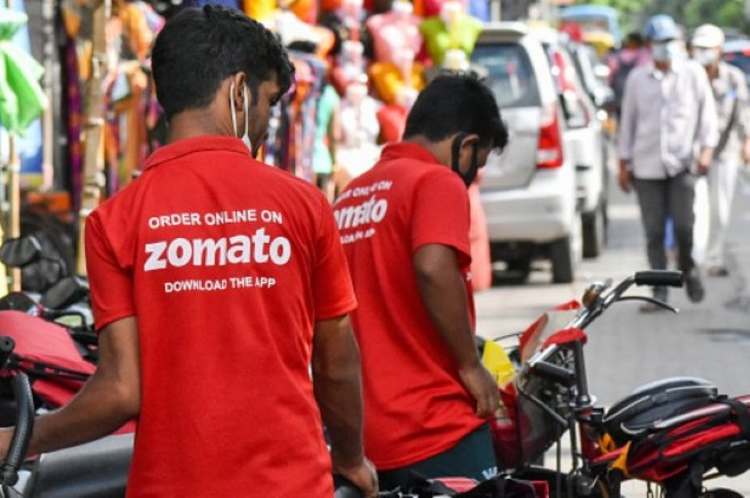
In a country where aspirations often get stuck in traffic jams, a quiet revolution is reshaping the idea of work—powered not by corner offices or factory floors, but by two-wheelers, mobile apps, and digital platforms. The traditional 9-to-5 job is no longer the sole marker of professional success. Across urban and rural India, millions are carving out livelihoods beyond the conventional workspace—delivering food, tutoring online, freelancing in design and software, or working in logistics, healthcare, and more.
The gig economy, once viewed as a peripheral development, is now emerging as a key driver of India’s future economic growth. But while the sector is thriving, it remains worryingly underprepared. A silent revolution is underway, but it is progressing without a clear roadmap. If India hopes to translate this shift into inclusive prosperity, it must move quickly to define a comprehensive strategy.
According to a NITI Aayog report, India already has over 7.7 million gig workers, and that number is projected to reach 23.5 million by 2030. In a labour market plagued by slow job creation, the gig economy offers flexibility, accessibility, and autonomy—particularly for students, homemakers, the semi-retired, and those seeking alternative careers. For many, gig work is not a fallback but a deliberate path to independence.
This is no marginal trend. The gig economy contributed approximately 1.25% to India’s GDP in 2023 and is expected to account for 4% by 2030. Fuelled by 73% smartphone penetration, cheap mobile data, and an increasingly digitized economy, India now hosts the world’s second-largest freelance workforce—trailing only the United States.
READ I Indian IT industry bets big on AI, but returns remain elusive
The glitter and the grind
Yet behind these impressive numbers lies a more complex and sobering reality. For gig workers, freedom often comes without security. Most work without social protection, health insurance, paid leave, or safeguards against arbitrary termination.
Take the case of a Swiggy delivery partner, who typically earns ₹18–25 per order, but only after spending hours on the road—without breaks, insurance, or job stability. An Ola driver may log over 72 hours a week, yet struggle to clear ₹25,000 a month after expenses. These stories are far from rare. The challenge now is to ensure that the regulatory frameworks and platforms designed to support this workforce actually translate into tangible benefits.
The Code on Social Security, 2020, is a step in the right direction, recognising gig and platform workers as a legitimate employment category. But recognition must evolve into action. What is needed are enforceable provisions for minimum wages, compensation in the event of accidents, grievance redressal, and legal protection.
Institutional innovations: From e-Shram to gig ID
India has already made early attempts to register and map its vast informal workforce. The e-Shram portal, launched in 2021, has registered over 290 million unorganised workers, including gig workers. However, it does not categorise gig workers as a distinct group, thereby failing to address their unique vulnerabilities.
One way to fix this oversight is to introduce a universal “Gig ID”—a single digital identifier that can be used across platforms, banks, and government departments. This ID would act as a verifiable record of a worker’s employment history, earnings, performance metrics, and training credentials. Such a system would facilitate access to formal financial services like microloans, insurance, pension schemes, and skill development opportunities.
A Gig ID could also serve as the foundation for a national database—enabling more targeted, evidence-based policymaking and unlocking access to services that are otherwise out of reach for informal workers.
Skills for the new economy
Empowerment through identification must be complemented by empowerment through education. A 2023 TeamLease report found that nearly 60% of gig workers are “skilling-ready” but lack pathways to upskill. Existing platforms like Coursera and Udemy are often expensive, poorly tailored, or inaccessible in terms of language and flexibility—key barriers for gig workers managing erratic schedules.
India urgently needs a cost-effective, mobile-first, multilingual skill development platform tailored to gig workers. Such a platform could offer certified micro-courses in areas like logistics, drone operation, content creation, and AI—aligned to the real needs of the gig economy. Integrated into the Gig ID system, it would allow workers to track progress, build credentials, and access better jobs.
Gender gaps and missed opportunities
Structural reforms will fall short if they fail to address a more fundamental challenge: gender disparity. Despite the flexible and remote nature of gig work, women constitute only 19% of India’s gig workforce. This underrepresentation reflects deep-rooted social and cultural barriers that hinder women’s economic participation.
Increasing women’s participation is not just a question of justice—it’s an economic imperative. Estimates suggest that improving gender parity in the gig economy could boost India’s GDP by as much as $500 billion by 2025.
To unlock this potential, reforms must go beyond digital infrastructure and address real-world barriers: safety concerns, lack of family-friendly policies, inadequate childcare, and limited access to digital tools. Targeted interventions—such as platform-level safety features, digital literacy programs, flexible scheduling, and support services for working mothers—could enable up to 10 million women to enter the gig workforce, sparking gains in GDP, education, and social equity.
The road ahead
India stands at the cusp of a fundamental reimagining of work. The gig economy is not a passing trend—it is a cornerstone of the country’s digital and economic future. But for it to become a sustainable and equitable engine of growth, India must act with urgency and vision.
The priorities are clear: institutionalize protections, implement a universal Gig ID, invest in skill development, and ensure gender inclusion. These pillars must underpin a broader framework that recognizes gig workers not as fringe actors but as vital contributors to India’s economic journey.
If India gets this right, it could set a global benchmark for building a gig economy that is flexible and fair, efficient and ethical—a model not just for emerging economies, but for the world.
Agreima Tyagi and Sakshi Joshi are graduate students, and Aneesh KA is Assistant Professor, Department of Economics, CHRIST University, Delhi NCR Campus.
